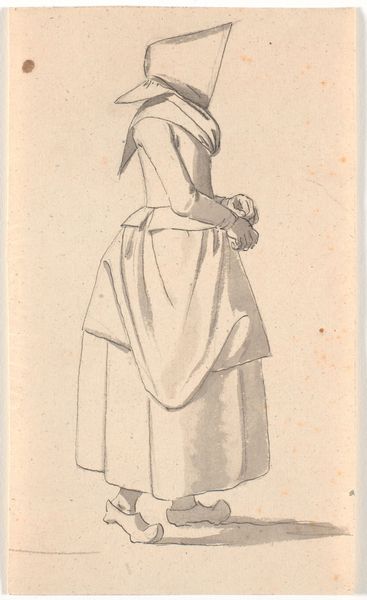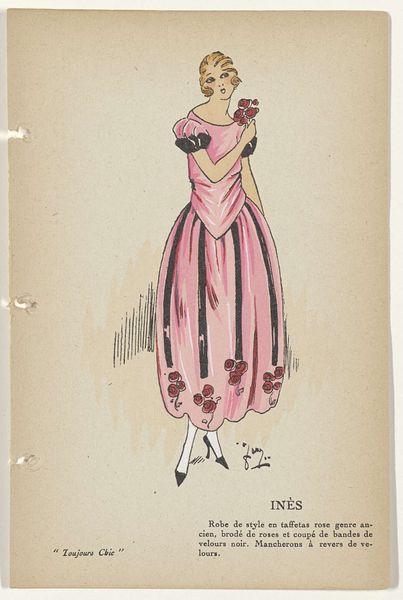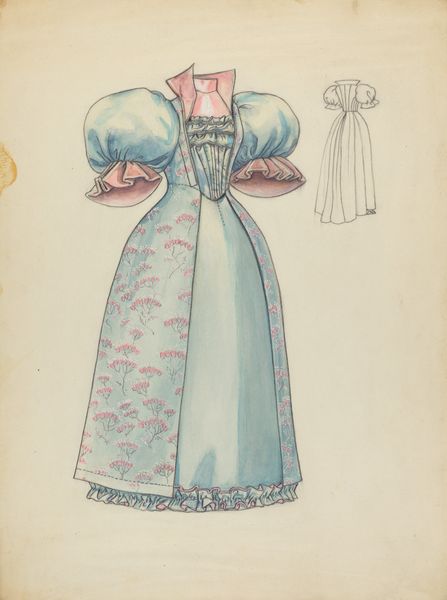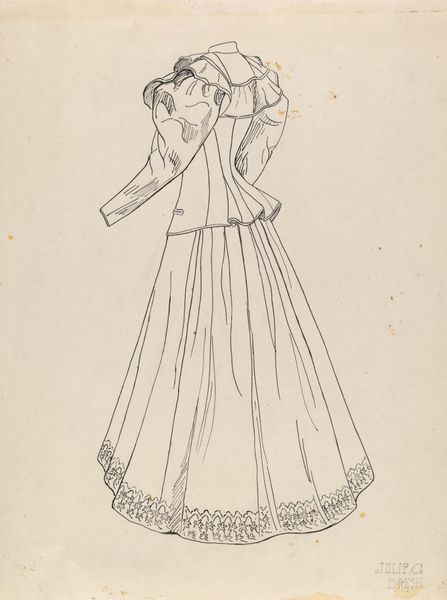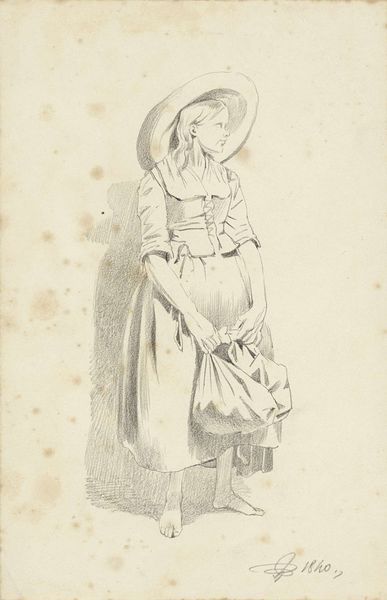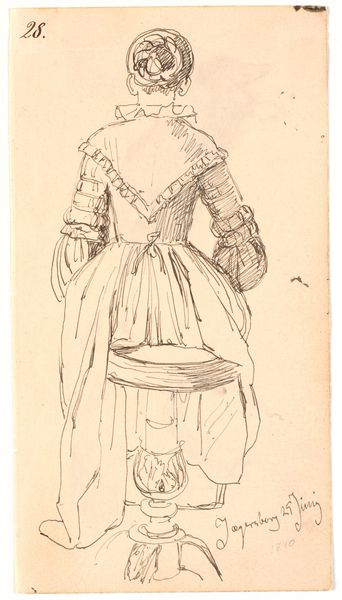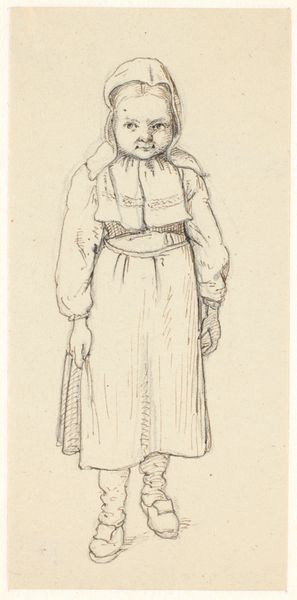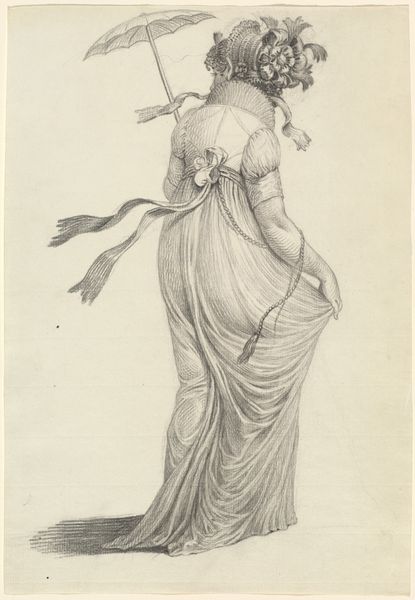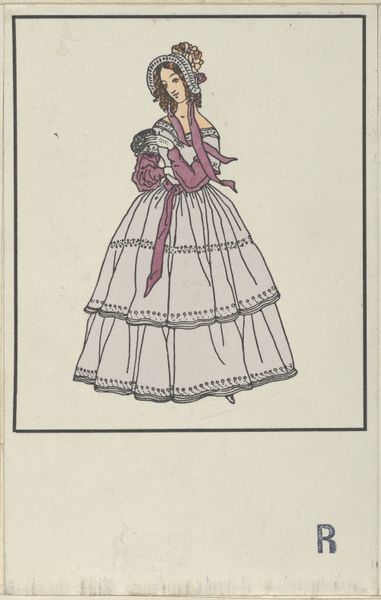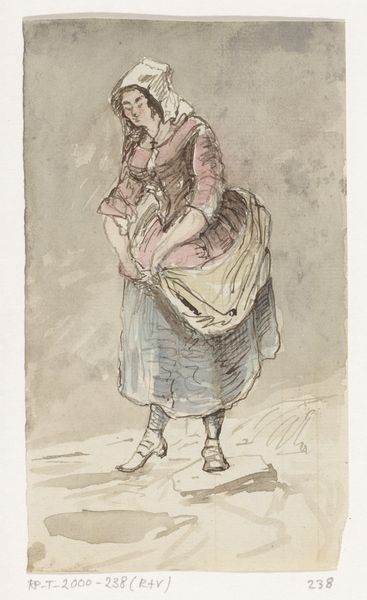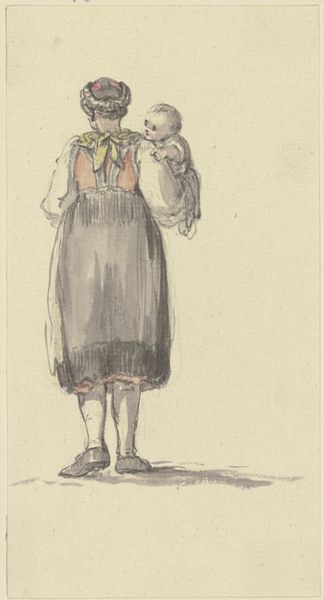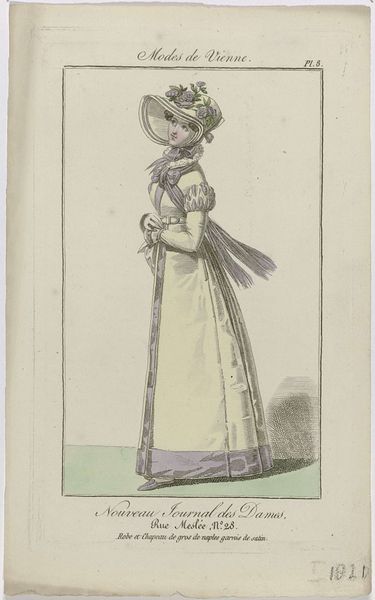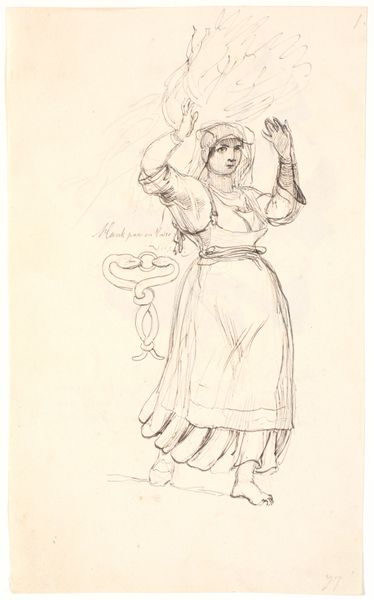
drawing, pencil
#
portrait
#
drawing
#
romanticism
#
pencil
#
genre-painting
Dimensions: 186 mm (height) x 134 mm (width) (bladmaal)
Editor: This is "Standing Lady with a Rose in her Hand," a pencil and drawing from 1846 by Johan Thomas Lundbye. It has such a delicate, almost wistful quality. What strikes you about this piece? Curator: Well, let's start by considering the date: 1846. Lundbye, a Danish artist associated with Romanticism, creates this very intimate portrait. But intimate for whom? We see a woman, likely middle-class, modestly dressed, her gaze directed down towards the rose. I immediately think about the limitations placed upon women of this era, their prescribed roles, and their often-silenced voices. Does the rose symbolize love, beauty, perhaps even a fleeting moment of agency within a constricting social structure? Editor: That's fascinating! I hadn’t thought of the rose as a symbol of agency. I was mostly reacting to her averted gaze, almost like a quiet contemplation. Curator: Exactly! And what does it mean to *not* meet the viewer’s gaze during this time period? Whose gaze are we, as viewers, inheriting? Are we complicit in the very structures that limited her freedom? It is worth investigating where Lundbye is in relation to his subject in terms of class and social standing. This positioning dictates the visual dialogue occurring on the page. Editor: So, her posture, the rose…they're all elements of a larger conversation about female identity and societal expectations at the time? Curator: Precisely. Romanticism often focused on idealized beauty and individual emotion. But whose emotions were considered worthy of artistic representation? By examining Lundbye’s choice of subject and her specific portrayal, we can unearth complex questions about gender, class, and representation during the 19th century. Editor: This gives me so much to think about. I appreciate that you've framed it as not just an image of a woman, but almost a commentary on her position. Curator: It's a reminder that art is rarely neutral. By engaging with its historical and social contexts, we can foster more critical and nuanced readings.
Comments
No comments
Be the first to comment and join the conversation on the ultimate creative platform.
